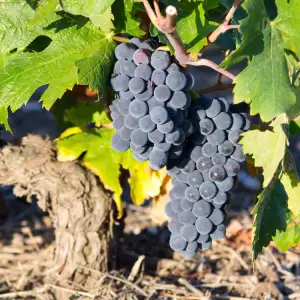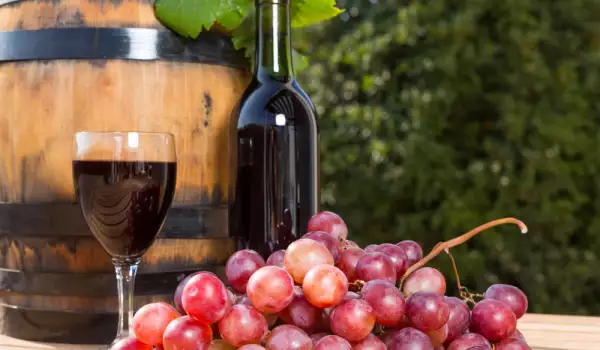Carignan is a red wine variety originating from Spain. Carignan is named after the region it is grown in - Cariñena, Aragon province. The variety is highly widespread in the regions of Sardinia and Lazio in Italy, South Rhône and Languedoc-Roussillon in France and Catalonia in Spain. Curiously enough, there is a white version of this variety in Languedoc-Roussillon, called Carignan blanc.
Carignan actually has several names depending on the country it is grown in. In France it is called Carignan and in Italy Carignano. In Spain it goes by Cariñena and in California it sounds like Carignane.
The Carignan variety is quite picky due to the fact that it blooms and ripens late, while at the same time it is very susceptible to a great many of the diseases that affect vines. Despite its fussiness, Carignan is a grape that gives incredibly high yields.
This cannot necessarily be determined as a positive trait because high yields might mean too much production and a lack of interest on the market. The lack of interest is further amplified by the tendency of high yielding grapes to give a low concentrated fruit that is not capable of becoming a quality wine.
History of Carignan

Early Italian wine writers speculated that Carignan was actually a French wine grape variety, taken to the island of Sardinia by the Phoenicians as early as the 9th century BC. It is believed that from there the grape spread to the other Phoenician colonies, ultimately reaching the continental part of Italy and taken to the western parts of the Mediterranean by the ancient Romans.
Nowadays, ampelographers steer away from this theory due to the lack of historical documents or proof from DNA analyses to confirm a Phoenician or Italian origin. Instead, all evidence points to a Spanish origin of Carignan.
Ampelographers believe that Carignan is likely a very old variety, coming from the Aragon region in the northwestern parts of Spain. It was likely taken to Sardinia somewhere between 1323 and 1720, when the island was under Spanish influence. At some point, Carignan reached Algeria, where it turned into a variety that gave very high yields that were exported to France to be blended with French wines.
After a disease devastated a great part of the Fresh vines in the middle of the 19th century, plantations with Carignan grew significantly. They grew even more after Algeria gained independence in 1962. France had the highest number of plantations in 1988 when the area occupied by Carignan vines came out to 167 000 ha.
Characteristics of Carignan
Wines from the Carignan variety are characterized by a very dark color, high acidity, high amount of tannins, excessively high acerbity and in general do not leave a pleasant impression in the consumer. Whenever the variety is used to make wines in the Beaujolais style, the result is much better - clearer color, softened tannins and light fruit aromas.
In winemaking, Carignan is very often used only as a deep coloring component in wines where the main varieties are other than itself.
Very rarely do they produce wines solely from this variety, due to the serious difficulties winemakers encounter in working with its high acidity, tannins and acerbity. A great deal of skill is required to create an elegant and refined wine, instead of a sour and acerbic one.
Usually, Carignan is blended with the Syrah and Grenache varieties. The results end up being fantastic when the vines are older - 50-60 years or more.

Serving Carignan
Carignan goes excellently with venison, steaks with potatoes, while the taste of duck served with Carignan is phenomenal. It is in fact duck meat that goes best with this wine. If you would like something different, serve Carignan with figs - their soft sweetness provides a pleasant contrast to the higher acidity of the wine.
Among the first-rate dishes that this red wine can be served with is duck fillet with sauce. The combination is unbelievable, one that will soften the sharp wine tannins.
Carignan is superb with all kinds of sausages and birds, roasted vegetables and fattier meats. Lasagna and spaghetti with meat, as well as the traditional spiced sausages are outstanding with a glass of Carignan.
In general, Carignan is served with different dishes in the different countries. For example, in Europe it is served with Catalan sausage with pepper, in Asia with lobster with black pepper, in America with eggplant and spicy meatball lasagna, and in Africa and the Middle East with frikkadels.
Carignan needs to be served at room temperature, to provide the best possible taste experience.








Comments